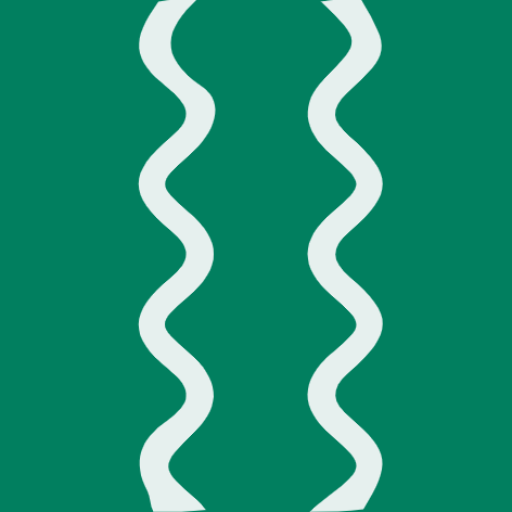This content is for information only and not medical advice.
If you live with Crohn’s disease and acid reflux, you’ll know the two rarely behave like polite houseguests. They don’t sit quietly in separate rooms. They wander into each other’s territory, muddle their symptoms, and leave you wondering if it was last night’s curry or the Crohn’s itself causing the trouble.
The problem is that medicine tends to put conditions in tidy boxes. Crohn’s goes in the inflammatory bowel folder, reflux goes in the stomach acid drawer. Your body, unfortunately, has not read the filing system. This separation creates confusion, endless trial-and-error with food and medication, and a great deal of frustration when symptoms flare without warning.
The good news is that by seeing Crohn’s disease and acid reflux as connected rather than isolated, you can make smarter choices. Once you understand how biology, psychology, and simple habits interact, you can cut through the noise and reduce the stress of constant guesswork.
Important: This article shares general insights only. It is not a substitute for medical advice. Always speak to your doctor or specialist before changing your treatment, diet, or medication.
What links Crohn’s disease and acid reflux
Crohn’s is inflammation in the digestive tract. Acid reflux is stomach acid escaping upwards. On paper, they look like neighbours who should mind their own business. In reality, the connection is more obvious than it first appears.
Crohn’s can slow down gut motility, which makes reflux more likely. Medications such as steroids or NSAIDs, often prescribed for Crohn’s, can irritate the stomach lining and trigger acid symptoms. And then there is the overall stress load. A body dealing with inflammation is simply more reactive.
We often make the mistake of blaming the wrong culprit. If you eat tomatoes and later feel awful, you will probably blame the tomatoes. In fact, it might be the medication or slower digestion that made the tomatoes look guilty.
People searching for reflux advice often focus only on “acid reflux remedies” and miss the Crohn’s context. This leaves them trapped between categories, never seeing the bigger picture.
Why symptoms overlap more than you think
Heartburn, bloating, chest discomfort, diarrhoea. These symptoms could be reflux, Crohn’s, or both. No wonder patients and sometimes doctors confuse one for the other.
Humans are dreadful at separating signals. If two things feel similar, we assume they are the same. It’s like confusing indigestion with heartbreak. Both can feel like something pressing on your chest. One needs antacids. The other needs a playlist of Adele.
I have heard countless patient stories where someone thought they were having a Crohn’s flare, only to find it was reflux from lying flat after a heavy meal. Conversely, reflux pain has been mistaken for strictures. The body’s signalling is an unreliable narrator.
Everyday triggers that affect both conditions
Food and lifestyle triggers do not respect neat medical boundaries. They flare wherever they can.
- Spicy or fatty foods, coffee, chocolate, tomatoes
- Stress, lying down after meals, smoking, alcohol
- Medications that irritate the gut lining
The way we think about food adds to the problem. Most people create long blacklists of “bad” foods to avoid. But a blacklist only grows and rarely shrinks. It is often more effective to flip the script and create a whitelist of foods you can eat comfortably. Focusing on what is safe rather than what is banned is less depressing and far more empowering.

Why managing reflux is different when you have Crohn’s
Reflux management is not the same for Crohn’s patients. Standard reflux drugs such as PPIs can interact with Crohn’s treatment or worsen gut issues. If you have had resections, reflux can present in unusual ways. Even dietary experiments are harder because symptoms overlap.
Faced with too many options, people often freeze. The trick is to narrow down the choice to a simple first step. That might be smaller meals, staying upright after eating, or one safe medication to discuss with your doctor. You do not need encyclopaedic knowledge. What you need is a shortlist and the confidence to try it.
Psychological toll and decision fatigue
Living with Crohn’s disease and acid reflux is not just about burning throats and bloated bellies. It is also about the mental grind of monitoring every symptom.
Asking “Is this reflux or a Crohn’s flare?” creates anxiety. Decision fatigue builds until you stop experimenting altogether.
Simple rituals can help. Chewing gum, sipping warm water, or propping up your pillow may seem trivial. But if your brain believes in the ritual, your body often follows. This does not make the effect fake. It shows how perception can change the experience of pain or discomfort.
By reframing reflux as a daily signal you can influence, rather than a random act of stomach acid, you regain some control.
Practical strategies to ease reflux with Crohn’s
Here are practical ways to keep reflux in check while living with Crohn’s:
- Eat smaller meals and stay upright for two to three hours after eating
- Keep a symptom diary and look for “safe foods” rather than only spotting culprits
- Try gentle stress-management techniques such as breathing exercises or guided relaxation
- Use commitment devices, like alarms to stop late-night snacking, instead of relying on willpower
- Speak with your doctor if reflux patterns change or interact with Crohn’s treatment
The point is not to hunt for one magic cure. It is to stack small, useful habits until reflux becomes less of a nuisance.
Rethinking value in treatment and support
We have an odd bias in healthcare. We are quick to pay for expensive pills and slow to use free interventions such as posture, sleep, or pillow height. It is like buying noise-cancelling headphones while refusing to shut the window.
Sometimes the cheapest fix is the one that works best. Raising your pillow by a few inches can do more than another round of prescription tweaks. Value is not always found in the pharmacy.
Conclusion Actionable takeaways
Crohn’s disease and acid reflux are connected in ways that medicine’s tidy categories do not like to admit. By recognising the overlap, reframing diet choices, and using small daily habits, you can manage symptoms with greater confidence.
Practical steps you can take today:
- Track Crohn’s and reflux symptoms together, not separately
- Focus on safe foods rather than obsessing over banned ones
- Use posture, meal timing, and stress relief as first-line defences
- Speak with your doctor if reflux patterns change or interact with Crohn’s treatment
These two conditions may overlap, but they are far from unbeatable. With the right perspective, you can keep them in check.
Common Questions About Crohn’s and Acid Reflux
Yes. Crohn’s can slow digestion, increase inflammation, and medications can irritate the stomach, making reflux more likely.
Reflux usually presents as burning in the chest or throat, especially after meals or lying down. Crohn’s flares often involve diarrhoea, abdominal pain, and fatigue. Keeping a diary can help separate the two.
Common culprits include spicy meals, fatty foods, chocolate, coffee, and tomatoes. Triggers vary, so tracking is important.
Some are, some are not. Proton pump inhibitors can be safe but may have side effects or interactions. Always check with your gastroenterologist.





